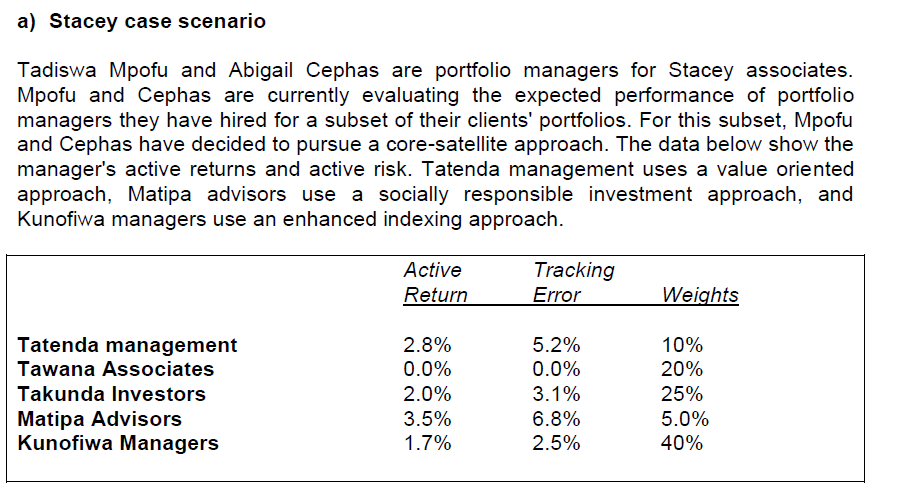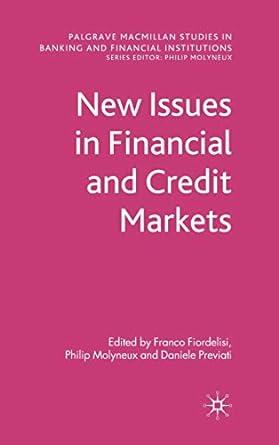Question
Under Staceys current plan managers are paid 0.20% for the first R20 million under management and 0.35% for assets amounts over R20 million. The primary

Under Staceys current plan managers are paid 0.20% for the first R20 million under management and 0.35% for assets amounts over R20 million. The primary concern at Stacey is that managers are not provided proper incentives. Under a proposed fee schedule, managers would be paid 0.40% for the first R15 million under management, 0.20% for assets amounts over R15 million but less than R50 million and 0.12% for assets amount over R50 million plus 10% of all excess returns relative to the managers benchmark. During discussion of these items, Cephas makes the following comments: Our proposed plan should contain low water marks provisions. These provisions state that managers will be paid no less than the certain amount during bear markets. This will prevent us from loosing good managers during markets downturns. Your proposal to cap performance fees is illogical. The cap would discourage your managers from taking the risks necessary to obtain higher returns. Rather than aligning the managers goals with your own this could have a very negative effect. i) Calculate the expected active return, expected active risk and expected information ratio of this subset of managers, given the above allocations. (5) ii) State whether each of the comments made by Cephas is correct or incorrect and explain your selection. (4) iii) Given that assets under management is R100 million and excess return relative to benchmark is -7%, evaluate the current and proposed fee structures. (4) b) FBC Securities case scenario Leeroy Chitseko, CFA is a Fixed income securities traders at FBC Securities. Chitseko has decided to pursue a contingent immunization strategy over a 5-year time horizon. He just purchased at par R10 million worth of 7.7%, annual coupon, 8 year bonds. The current rate of return for immunized strategies is 8%, and he is willing to accept a return of 6.4% (this is the safety net return). i) Determine the cushion spread. (2) ii) Compute the required terminal value and the required assets needed at initial implementation. (6) iii) Determine whether active management is still viable should interest rates immediately rise to 9.8%. (4)
a) Stacey case scenario Tadiswa Mpofu and Abigail Cephas are portfolio managers for Stacey associates. Mpofu and Cephas are currently evaluating the expected performance of portfolio managers they have hired for a subset of their clients' portfolios. For this subset, Mpofu and Cephas have decided to pursue a core-satellite approach. The data below show the manager's active returns and active risk. Tatenda management uses a value oriented approach, Matipa advisors use a socially responsible investment approach, and Kunofiwa managers use an enhanced indexing approachStep by Step Solution
There are 3 Steps involved in it
Step: 1

Get Instant Access to Expert-Tailored Solutions
See step-by-step solutions with expert insights and AI powered tools for academic success
Step: 2

Step: 3

Ace Your Homework with AI
Get the answers you need in no time with our AI-driven, step-by-step assistance
Get Started


